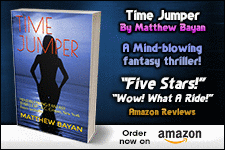How To Describe Without Describing
- by Matthew Bayan
- Nov 25, 2018
- 3 min read
As an editor, one of my pet peeves is the writer who thinks he needs to put every last detail on paper. It might be a place or a person. It might be a room. Whatever it is, the description becomes exhausting. “I want them to see it,” the writer usually says.
I’ve red-penned entire pages written to describe a room; two or three pages to describe how a character looks and what she is wearing.
You’ve heard the expression, “A picture is worth a thousand words.” That doesn’t mean that when you describe a picture – some visual element – that you need to use a thousand words.
Hemingway said, “We’re not interior decorators.” Good advice. Now, how do we use it?
Let’s look at this from the point of view of the reader. With a description, you have the choice of involving the reader in building an image in the mind or of spoon-feeding that image. Which do you think is more effective in holding the reader’s attention?
For example, have you ever listened to a radio drama? Or listened to a talk-show? Don’t you imagine what the people in the show look like? Does it matter that you “see” a person as middle-aged and heavy while someone else builds a mental image of a thirtysomething who is tall and thin?
The point here is that the radio show involves the listener in building a mental image. That exercise gets the listener invested in the show. Without realizing it, the listener is filling in the blanks regarding what characters look like, where they are, and what they are doing.
Conversely, if the show spent minutes describing what each of the show’s participants looked like or their setting, the listener would get bored. Spoon-feeding details does not create a participative experience.
Same with readers.
The simple solution is to focus on a very specific aspect of a setting, a thing, or a character and let the reader build the rest in his or her mind.
Example of over-describing: The knife had a stout wooden handle of what looked like oak or maybe maple and was about five inches long. From one end a short, curved blade protruded about three inches. It looked sharp. The blade was rusted, but the edge shone like it had just been drawn across a whetstone. The whole blade was sharply curved like an eagle’s talon. It was the kind of knife you could slip into a pocket.
Example of specific focusing: The knife had a wicked little blade, curved like an eagle’s talon; not a stabbing weapon, but rather designed to open you up.
In the shortened example, the reader is presented more with the function of the knife, rather than its physical attributes. Maybe the reader views it as a linoleum knife, or the kind of knife used to shuck oysters. Whatever the reader visualizes is fine. The reader is building an image, participating in the process.
When faced with the task of describing, less information is better than a data-dump. Be specific and let the reader help with the lifting rather than turning the reader into a mental couch-potato.
SPECIAL FREEBIE JUST TODAY, NOVEMBER 25, 2018
BLAST RADIUS - “The killer thriller that Tom Clancy fans will love.”
A tale of greed, of raw political ambition, and of the enduring love between a father and his daughter.
Please leave a review after reading.
Click on the cover for the free Kindle book (free only today):











Comments